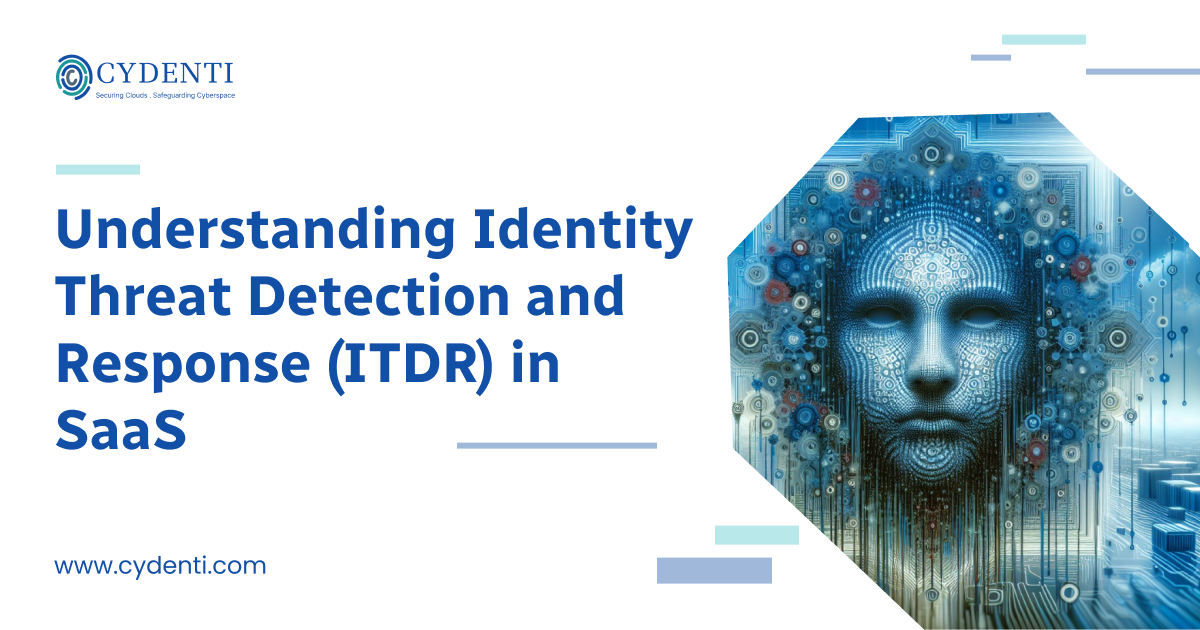As businesses increasingly adopt Software as a Service (SaaS) applications to enhance their operations, the need for robust security measures has never been more critical. Among these measures, Identity Threat Detection and Response (ITDR) has emerged as a vital component in safeguarding SaaS environments. This article delves into the importance of ITDR in SaaS, how it works, and why it is essential for modern enterprises.
What is ITDR?
Identity Threat Detection and Response (ITDR) refers to the processes and tools used to detect, analyze, and respond to identity-based threats in real-time. These threats can include unauthorized access attempts, compromised credentials, and malicious insider activities. ITDR focuses on protecting user identities and ensuring that only legitimate users can access sensitive data and applications.
The Importance of ITDR in SaaS
1. Protecting Sensitive Information: SaaS applications often store critical business data such as customer information, financial records, and proprietary intellectual property. ITDR helps ensure that this data is accessed only by authorized personnel, thereby reducing the risk of data breaches and unauthorized access.
2. Detecting Anomalies in Real-Time: ITDR solutions continuously monitor user activities to identify unusual or suspicious behaviors. By detecting anomalies in real-time, these solutions can quickly flag potential threats and prevent unauthorized access before significant damage occurs.
3. Enhancing Incident Response: In the event of a security incident, ITDR provides valuable insights and context, enabling security teams to respond swiftly and effectively. This minimizes the impact of the breach and helps in the quick restoration of normal operations.
4. Ensuring Compliance: Regulatory requirements such as GDPR, HIPAA, and CCPA mandate strict controls over user access and data protection. Implementing ITDR helps organizations comply with these regulations by providing detailed logs and audit trails of user activities and access patterns.
5. Mitigating Insider Threats: Insider threats, whether malicious or accidental, pose a significant risk to organizations. ITDR helps detect and respond to such threats by monitoring user activities and identifying deviations from normal behavior patterns.
How ITDR Works
1. Continuous Monitoring: ITDR solutions continuously monitor user activities across SaaS applications, capturing detailed logs and metadata. This provides a comprehensive view of all interactions within the environment.
2. Behavioral Analytics: By leveraging advanced analytics and machine learning, ITDR solutions establish a baseline of normal user behavior. Any deviation from this baseline triggers alerts, indicating potential threats.
3. Threat Intelligence Integration: ITDR solutions integrate with threat intelligence feeds to stay updated on the latest threat vectors and attack patterns. This helps in identifying and mitigating known threats effectively.
4. Automated Response: Upon detecting a threat, ITDR solutions can initiate automated responses such as revoking access, requiring additional authentication, or notifying security teams. This rapid response capability is crucial for minimizing the impact of a breach.
5. Comprehensive Reporting: ITDR provides detailed reports and dashboards, enabling security teams to analyze incidents, understand attack vectors, and improve security posture over time.
Implementing ITDR in SaaS Environments
To effectively implement ITDR in SaaS environments, organizations should consider the following best practices:
1. Integrate with Existing Security Infrastructure: Ensure that your ITDR solution integrates seamlessly with existing security tools and platforms such as Identity and Access Management (IAM) systems, Security Information and Event Management (SIEM) systems, and threat intelligence platforms.
2. Prioritize User Training: Educate employees about the importance of identity security and the role of ITDR. Regular training sessions can help users recognize potential threats and adhere to best security practices.
3. Conduct Regular Audits: Regularly audit user access and activity logs to ensure compliance with security policies and detect any anomalies. This proactive approach helps in identifying and mitigating potential threats early.
4. Leverage Multi-Factor Authentication (MFA): Implement MFA to add an extra layer of security. MFA significantly reduces the risk of unauthorized access by requiring multiple forms of verification.
5. Establish Incident Response Protocols: Develop and regularly update incident response protocols to ensure a swift and effective response to security incidents. This includes defining roles and responsibilities, communication plans, and recovery procedures.
Conclusion
Identity Threat Detection and Response (ITDR) is a critical component of a robust security strategy in SaaS environments. By continuously monitoring user activities, leveraging behavioral analytics, and integrating threat intelligence, ITDR helps organizations protect sensitive data, detect threats in real-time, and respond swiftly to security incidents.
Cydenti is one of the French pioneers in ITDR and SSPM, committed to helping businesses secure their SaaS applications and maintain a strong security posture. Contact us to learn how our innovative solutions can enhance your identity security and protect your SaaS environment.
